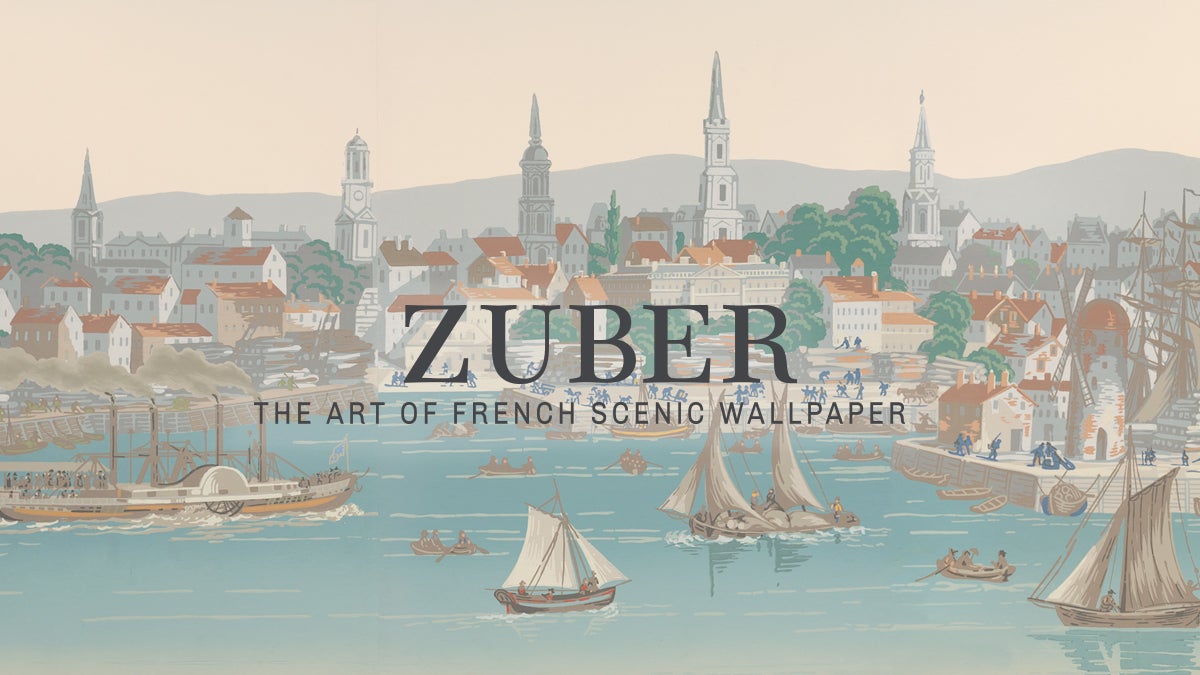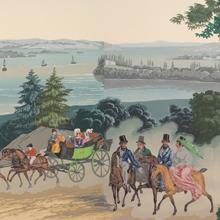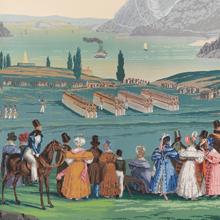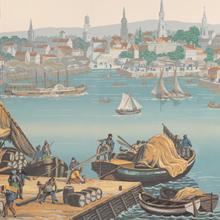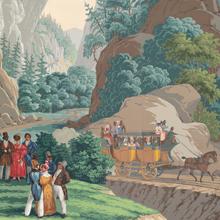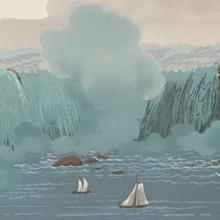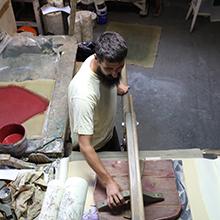Zuber: The Art of French Scenic Wallpaper
Zuber: The Art of French Scenic Wallpaper
The French have manufactured several types of wallpaper over the centuries, though their nineteenth-century handcrafted scenic landscape papers are arguably the most spectacular. This unique wallpaper created a breathtaking panoramic experience with all the walls in a room covered with non-repeating scenes. These mural-like papers transformed rooms, providing the opportunity for viewers to be swept away to an exotic place or immersed in an exciting period in history. Scenic papers enjoyed a golden era in both Europe and North America from the first decade of the 1800s until the 1860s, though they remained in print well after this period. Zuber et Cie is the only remaining firm that fabricates these papers today.
Jean Zuber (1773–1852) began working as a sales representative for a wallpaper firm at the age of seventeen in Mulhouse, France, before relocating the company to Rixheim, France, in 1797. By 1802, Zuber had become its sole owner, naming the firm Zuber et Cie. Zuber soon began producing panoramic papers and quickly gained prominence for his meticulous attention to detail and exquisite colors and designs. He worked closely with artists who generated full-scale panoramic compositions, which served as models for the hand-carved printing blocks. It requires anywhere from over one hundred to several thousand blocks to create a scenic paper set. Zuber et Cie’s artisans craft beautiful skies, which they carefully paint with large brushes before the rest of the imagery is block-printed by hand onto finely made paper.
From 1804 to 1860, Jean Zuber and his successors offered twenty-five different scenic papers beginning with Les Vues de Suisse (1804). Designed by Pierre-Antoine Mongin (1761–1827), it depicts many famous tourist attractions in Switzerland. Mongin also designed L’Hindoustan (1807), which paints an exotic picture of India in vivid colors. Years later, Les Lointains (1825) offered viewers a romantic, classical composition in grisaille featuring architectural elements dotting a tranquil garden, followed by Décor Chinois (1832), which depicts a vibrant botanical Chinese landscape. In 1834, Zuber introduced Les Vues d’Amérique du Nord (Views of North America), a French portrait of the New World designed by Jean-Julien Deltil (1791–1863). The scenic paper captured the nation’s attention more than a century later when First Lady Jacqueline Kennedy installed a historic set in the White House in 1961. During the 1840s and ’50s, Zuber et Cie emphasized indigenous flora and fauna in several panoramic papers. One of the most enchanting, Eldorado, first offered in 1849, features lush vegetation and showcases the continents of Africa, Asia, Europe, and North America.
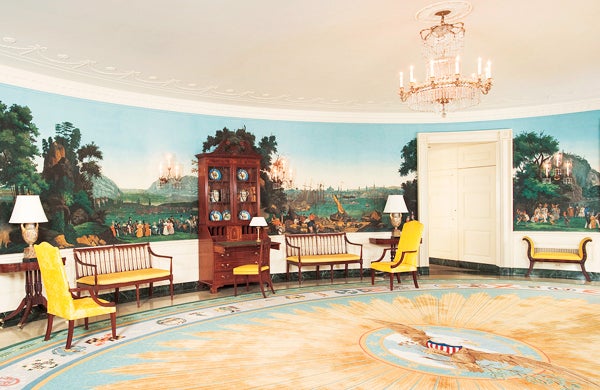
Zuber et Cie’s magnificent panoramic wallpapers continue to captivate present-day patrons. The firm uses the original antique printing blocks, which the French Ministry of Culture has designated as Historical Monuments. Over 150,000 woodblocks are stored in the factory’s vaulted cellars. This exhibition presents a complete set of Views of North America as well as individual lengths from L’Hindoustan, Eldorado, Les Lointains, and Décor Chinois.
Very special thank you to Zuber et Cie for making this exhibition possible; thank you also to Brian D. Coleman, author of Zuber: Two Centuries of Panoramic Wallpaper and John Nalewaja and Jim Francis of Scenic Wallpaper Installations.
[inset image]
Diplomatic Reception Room at the White House, Washington, D.C. 2010
Photograph by Bruce White
White House Historical Association
R2019.0310.001
©2019 by San Francisco Airport Commission. All rights reserved.
